Related Tags
25 Fender Telecaster tips, mods and upgrades
For some players, Leo Fender’s plank was perfect from the get-go. The Tele also happens to be one of the best modding platforms in all of Guitardom. Get your screwdrivers out…
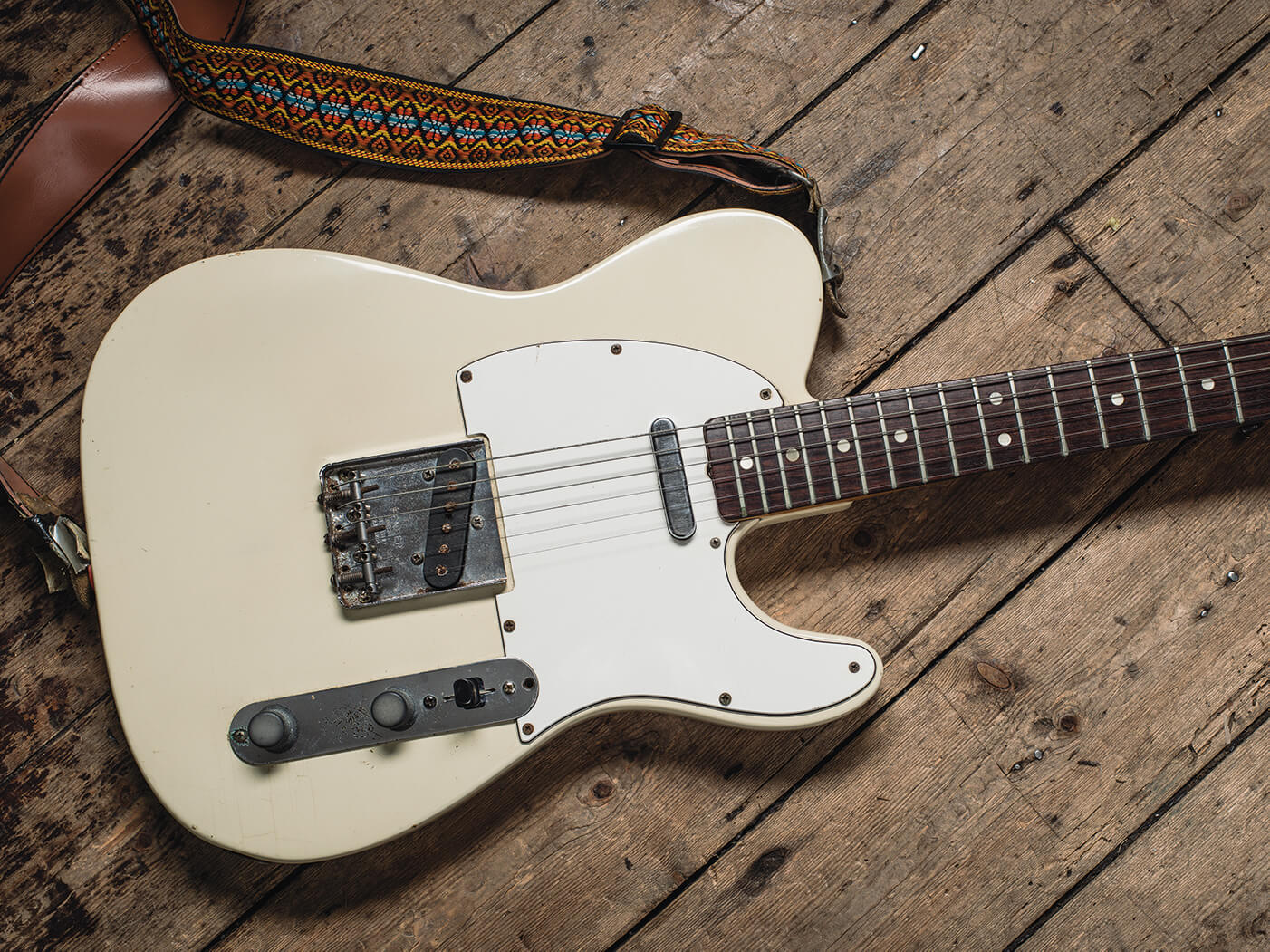
In its purest form, the Fender Telecaster hasn’t exactly put in a bad shift. With a starring role on more hit records than you could possibly count, the ultimate workingman’s six-string electric is a 66-year-old design that still feels, in so many ways, utterly contemporary.
Part of the genius of the Telecaster’s design is that it’s such a simple musical instrument to mass-produce, and it’s this modular, bolt-together aspect of its construction that makes the Tele the perfect platform for tinkering, customising, modifying and upgrading.
Whether you covet the mid-rich raunch of the early Broadcaster, the slicing treble of the seventies, that Bakersfield twang or something else entirely, it doesn’t take a working knowledge of quantum mechanics to tweak your Tele and make it sound and play the way that you want it to.
Here we present 25 tips that will help turn your guitar into a tone machine.
1. Flip your control plate

Almost from the beginning, players found the Tele’s pickup switch too easy to knock accidentally, and spinning the control plate around was one of the first common mods that players figured out. It puts the volume and tone controls within easy reach and moves the selector switch safely out of the way. If you try this, remember to swap over the volume and tone potentiometers and flip the switch around, otherwise everything will work backwards!
2. Silence that squeal
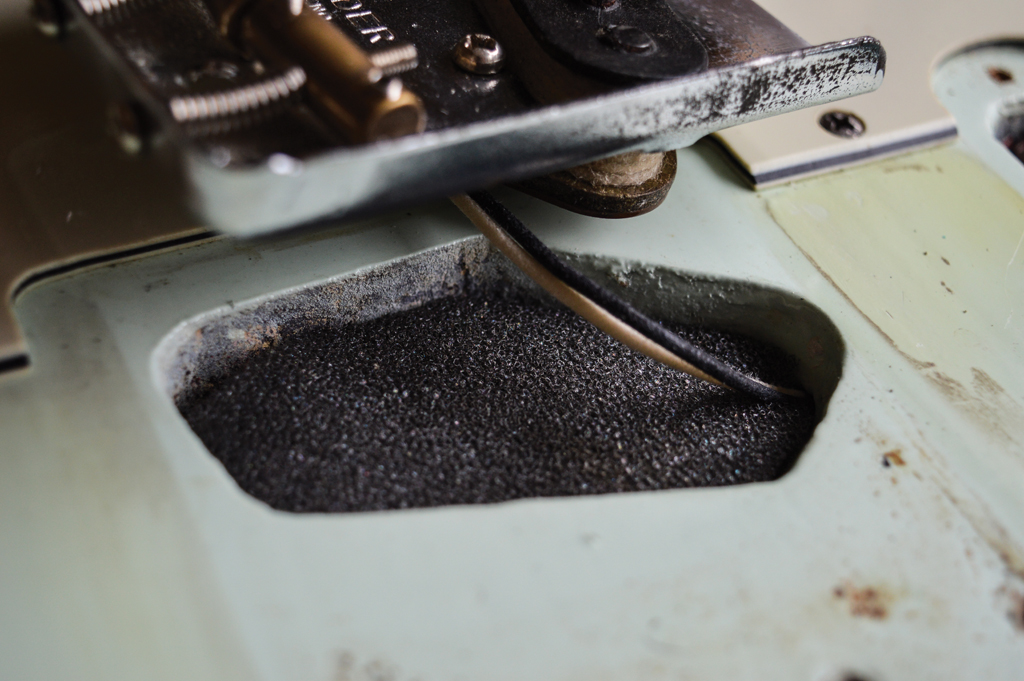
Microphonic feedback from Tele bridge pickups is commonplace, but still annoying. There are two simple ways to combat this: firstly, try swapping the spacer springs for 50s-style surgical tubing. You can also place some foam in the bottom of the pickup cavity; it has to be thick enough to press against the baseplate and dampen vibration, but not so thick that it prevents the height-adjustment screws from doing their job.
3. Upgrade your bridge plate
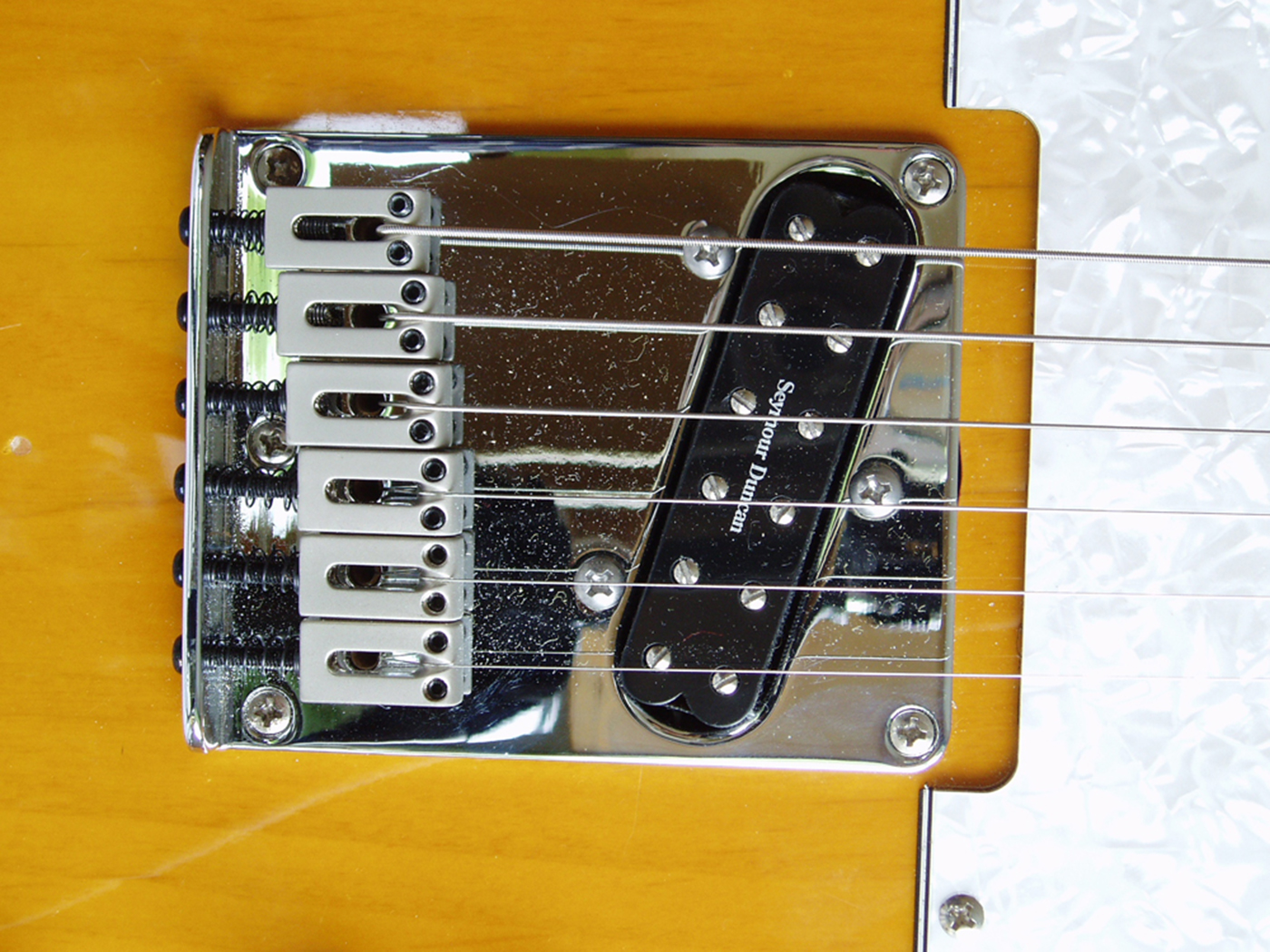
For many years, players have complained that the sides of Fender’s ‘ashtray’ bridge hinders access to the strings and takes the skin off their knuckles. If that’s you, why not try a design with lowered sides from the likes of Gotoh or Callaham? There are also debates surrounding the tonal merits of bridges made of cold-rolled steel, brass and aluminium, while some also claim that squeal can be reduced if the base of the bridge is perfectly flat and smooth. Try a few and see which you prefer.
4. Brighten up your neck pickup
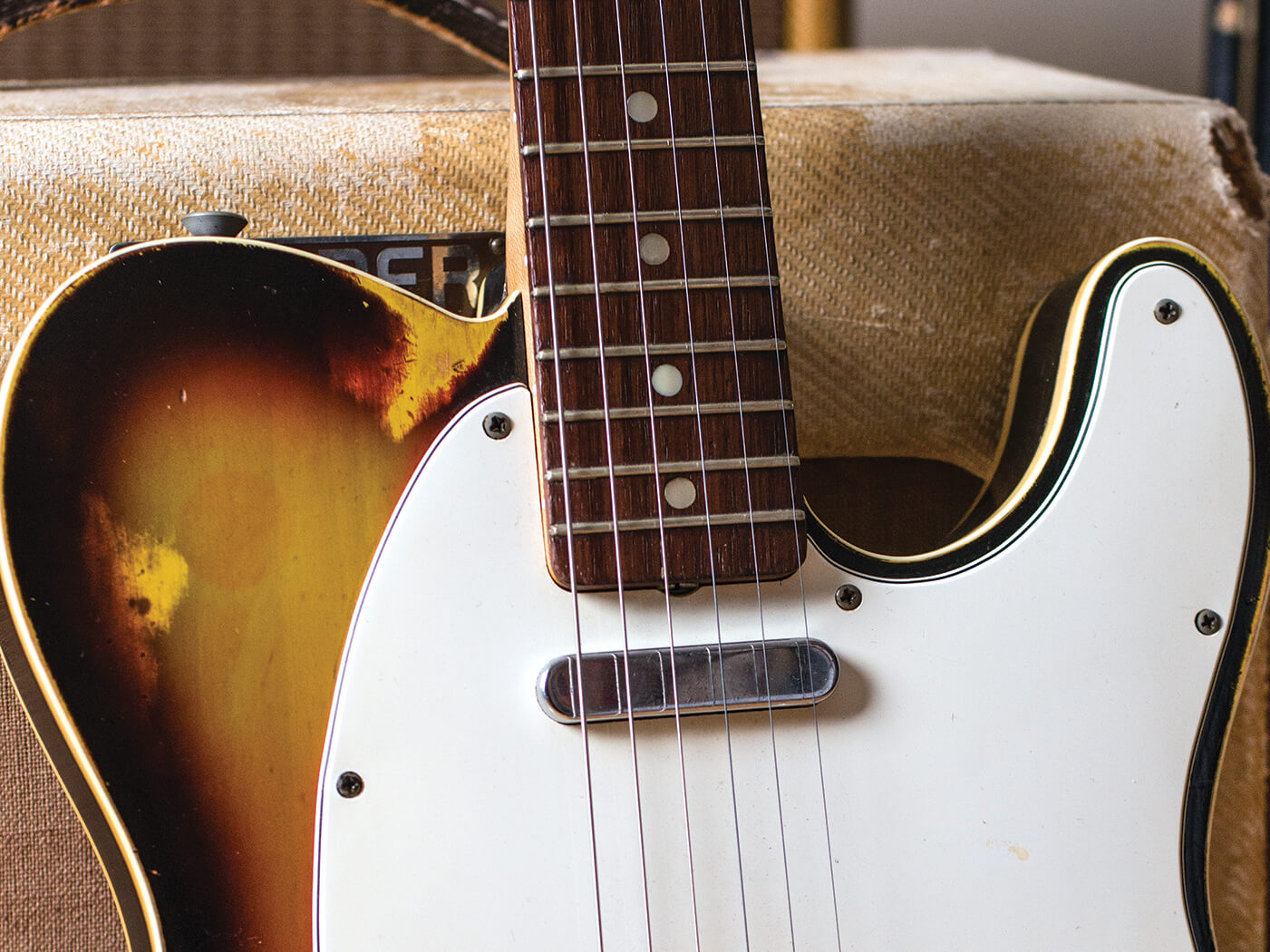
Just like a traditional humbucker, the metal cover on a Telecaster neck pickup can suck a little treble from your tone. To unleash the full frequency potential of Tele neck pickups, just snip the cover’s grounding connection. The downside is that you’ll experience a bit of noise if you touch the cover, but that’s easy to avoid and the extra brightness and transparency might persuade you to reconsider that pickup upgrade. Alternatively, try a nickel-silver cover for less high-end attenuation than brass.
5. Try top-loading
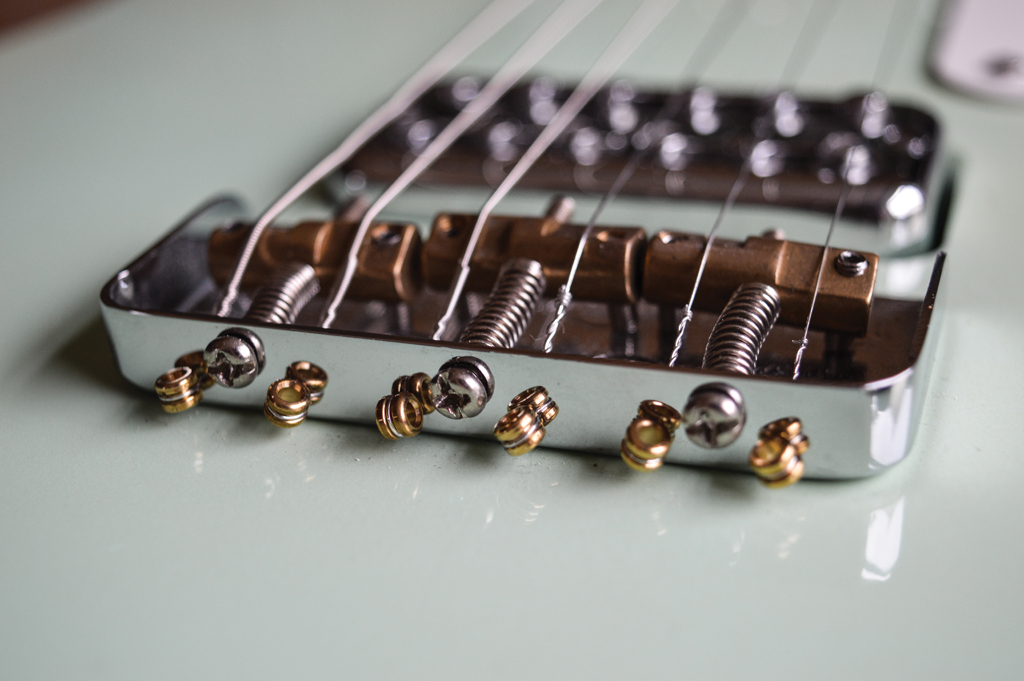
For a brief period in the late 1950s, Fender ceased through-body stringing on Telecasters and installed bridges with six holes drilled through the back lip. Many players feel that Teles with these ‘toploader’ bridges have a different sound. Detractors claim that top-loading reduces sustain, but fans point to enhanced twang, more bite and a ringing chime. Top-loading is also said to provide a more slinky feel – much like dropping down half a string gauge. If you want to try it yourself, either buy a top-loading bridge, or simply drill six holes in your existing unit.
6. Screw in your jack socket
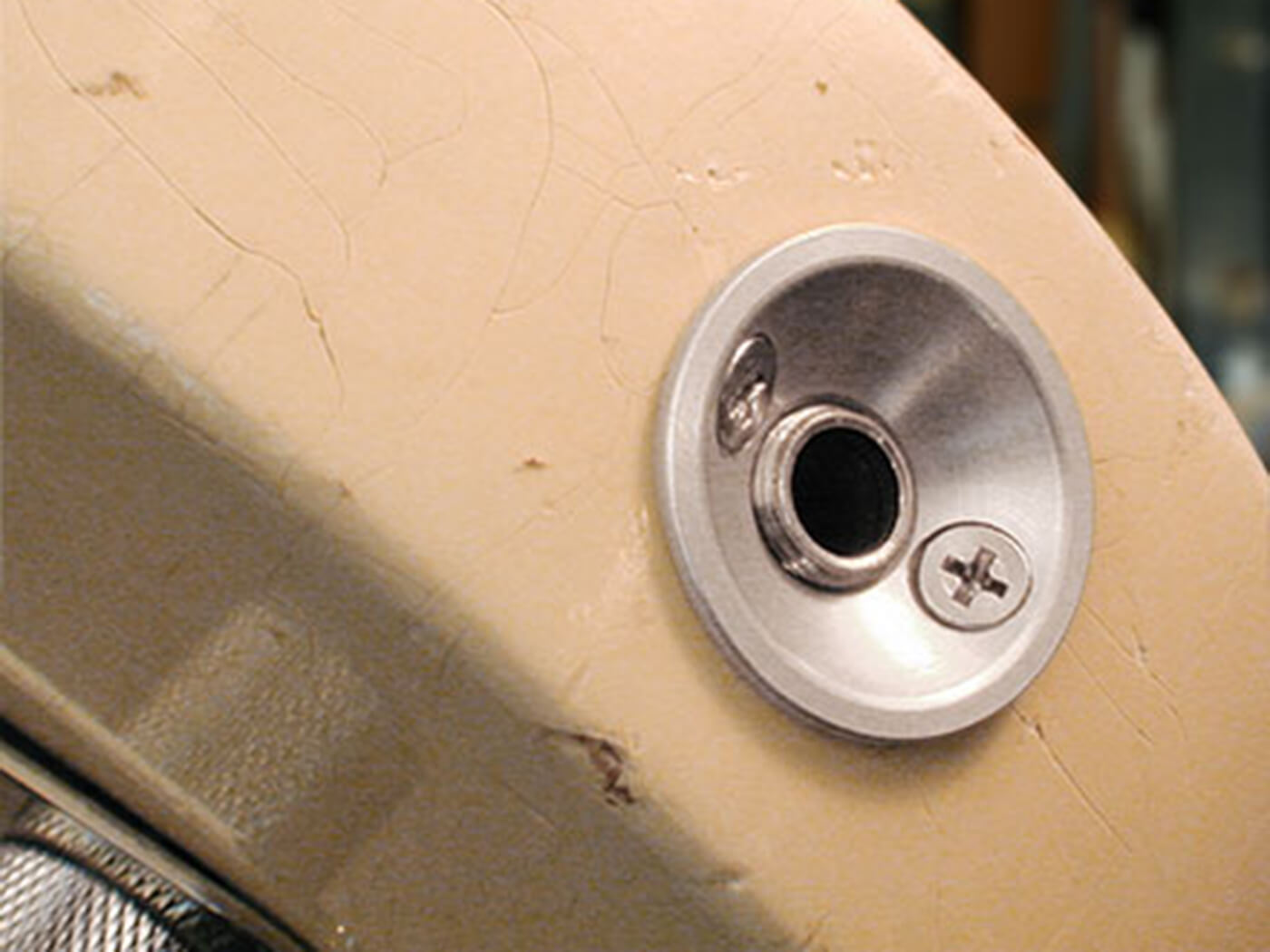
Traditional Tele jack sockets are held in place by a retainer clip that is notoriously fiddly to tighten up properly. Much more straightforward is a screw-in cup, such as those made by Electrosocket. It pushes straight into the hole, two small screws go in on the diagonal to hold it in position and that’s about it. The cup will never get loose, but you can take it in and out at will. Highly recommended.
7. Strat-style neck pickup adjustment
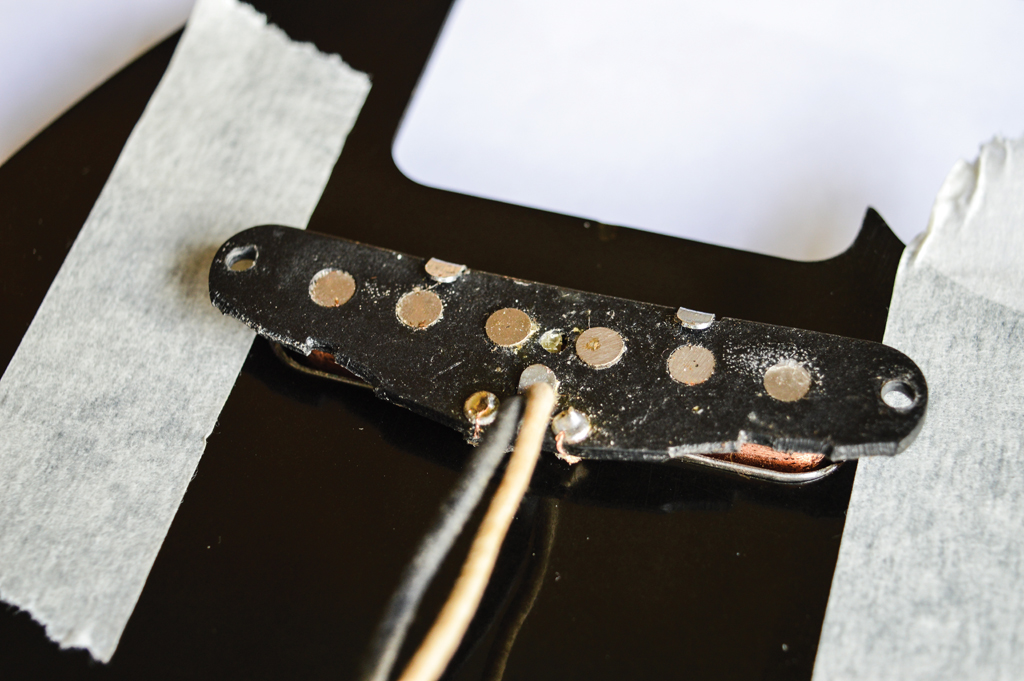
Traditionally, you have to remove the pickguard to adjust a Tele neck pickup as it’s mounted to the body. To make adjustment less hassle, you can mount it to the pickguard like a Strat. Fix pieces of masking tape at each end of the pickup hole, flip the pickup over and drop it through the hole in the pickguard. With a sharp pencil or pen, you can mark the position of the pickup’s screw holes onto the masking tape and drill through with an appropriate-sized bit. Remember, you’ll need new screws that will bite into the pickup’s bottom-flat, but you should be able to reuse the spring or tube spacers.
8. Change your saddles to sound better
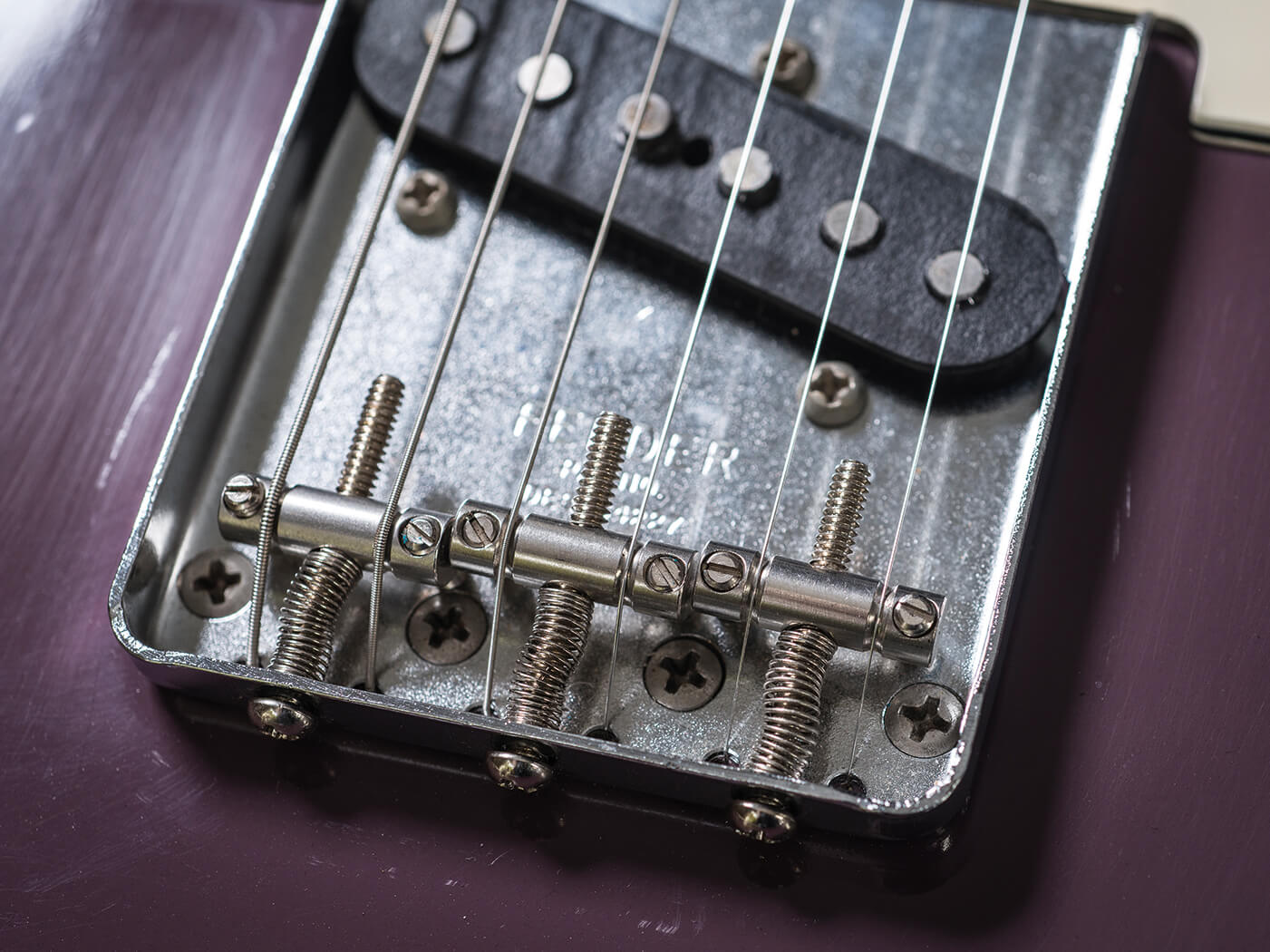
Fender experimented with the materials of Tele saddles almost from the start and the different metals will give different tonal outcomes. Brass is regarded as having a smoother, richer tone, but steel has a brighter, snappier attack with more growl. Aluminium is said to give the bright ‘acoustic’ quality of steel without sacrificing the thickness and body of brass. There’s no right answer – it’s about what works best with your guitar and amp’s sonic characteristics.
9. Change your tuners
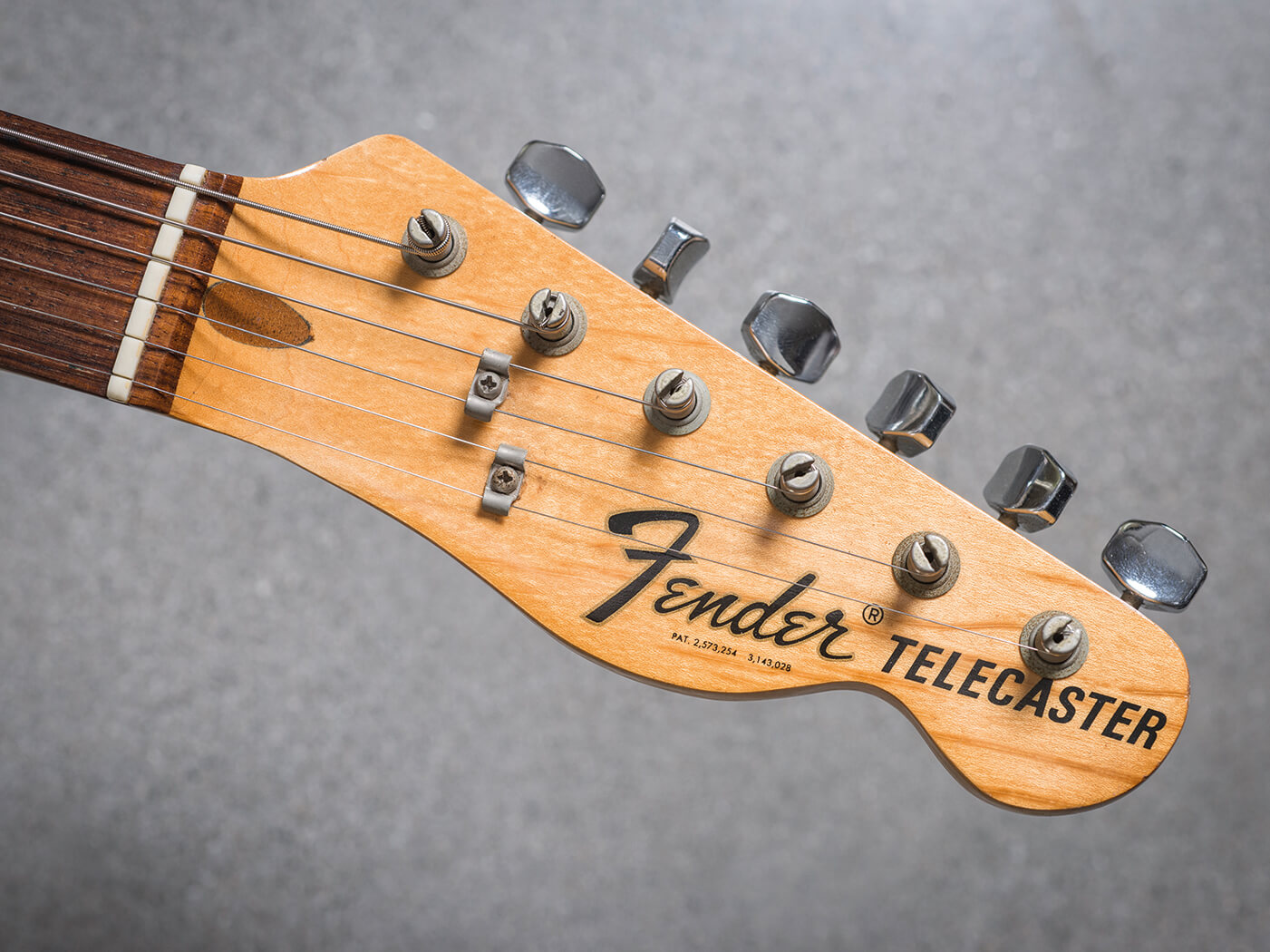
Diecast tuners can make a light-bodied Tele a bit neck-heavy, so swapping them out for a set of vintage-style Kluson lookalikes can improve the cosmetics and feel. Alternatively, if you’re doing a lot of behind the nut string-bending tricks, you may want to consider modernising with some diecast staggered-post tuners. These will enable you to ditch string trees and thereby reduce friction, making bending easier.
10. Swap saddles for better intonation
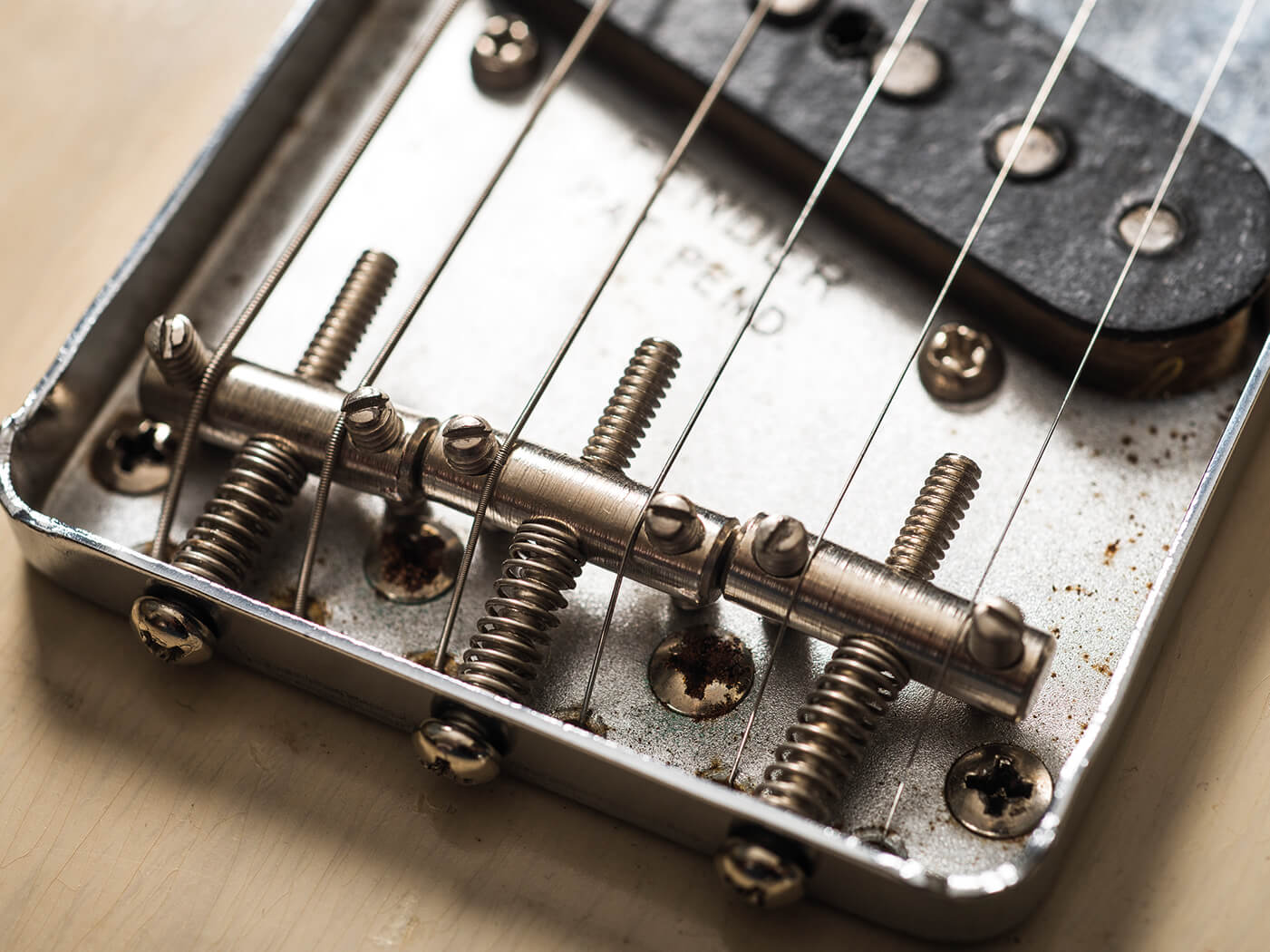
The presence of six individual saddles on the Stratocaster hints that Leo Fender understood that the three-saddle design has its limitations in terms of intonation. While six-saddle Teles are common these days, many prefer the tone of the old brass- and steel-barrel saddles, so if you want to keep things intonated properly, get yourself some compensated units. We’re big fans of the Gotoh In-Tunes in solid brass.
11. Better controls
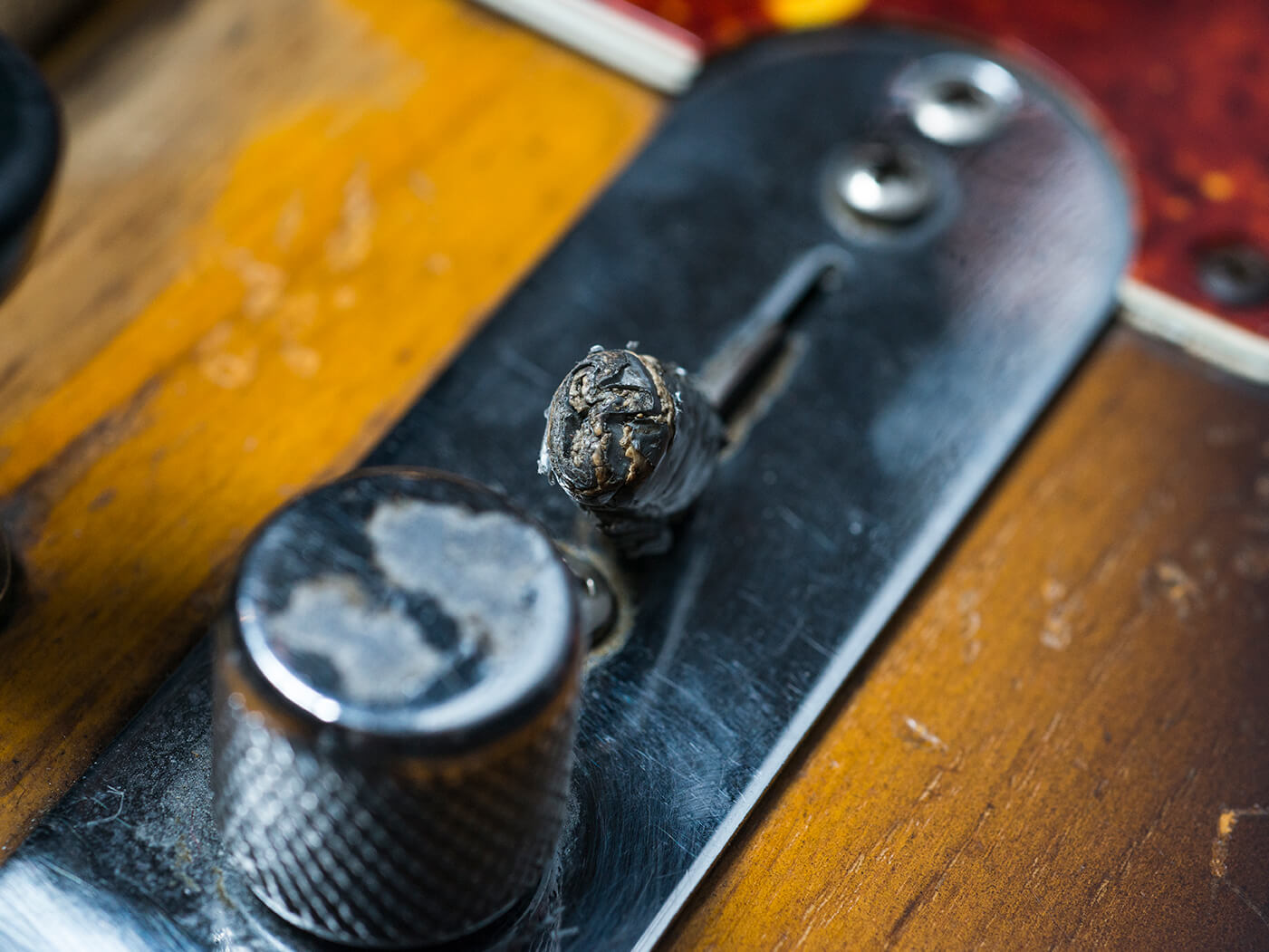
Some players find the standard Telecaster switch less than ideal for speedy pickup changes. The volume knob gets in the way of the switch, especially with the earlier-style switch tip, and the angle isn’t conducive for the right arm. Presumably, it explains why Fender changed to an angled switch when the Stratocaster was under development.
If the switch bugs you, consider getting a control plate with an angled switch slot from Rutters, RockRabbit or LsL Instruments. You could also check out slot-less control plates that are drilled for toggle switches instead.
Loads of Tele players like to perform volume and tone swells using their little finger to rotate the control knobs, but standard Tele knobs can get a bit slippery in the sweaty heat of a gig, and it’s tricky if you have small hands. The solution could be a set of ‘heavy knurl’ knobs. You can get them from various suppliers, but ensure they’ll fit onto your control pot shafts. Far Eastern pot shafts tend to have a narrower diameter.
12. Parallel/series switching
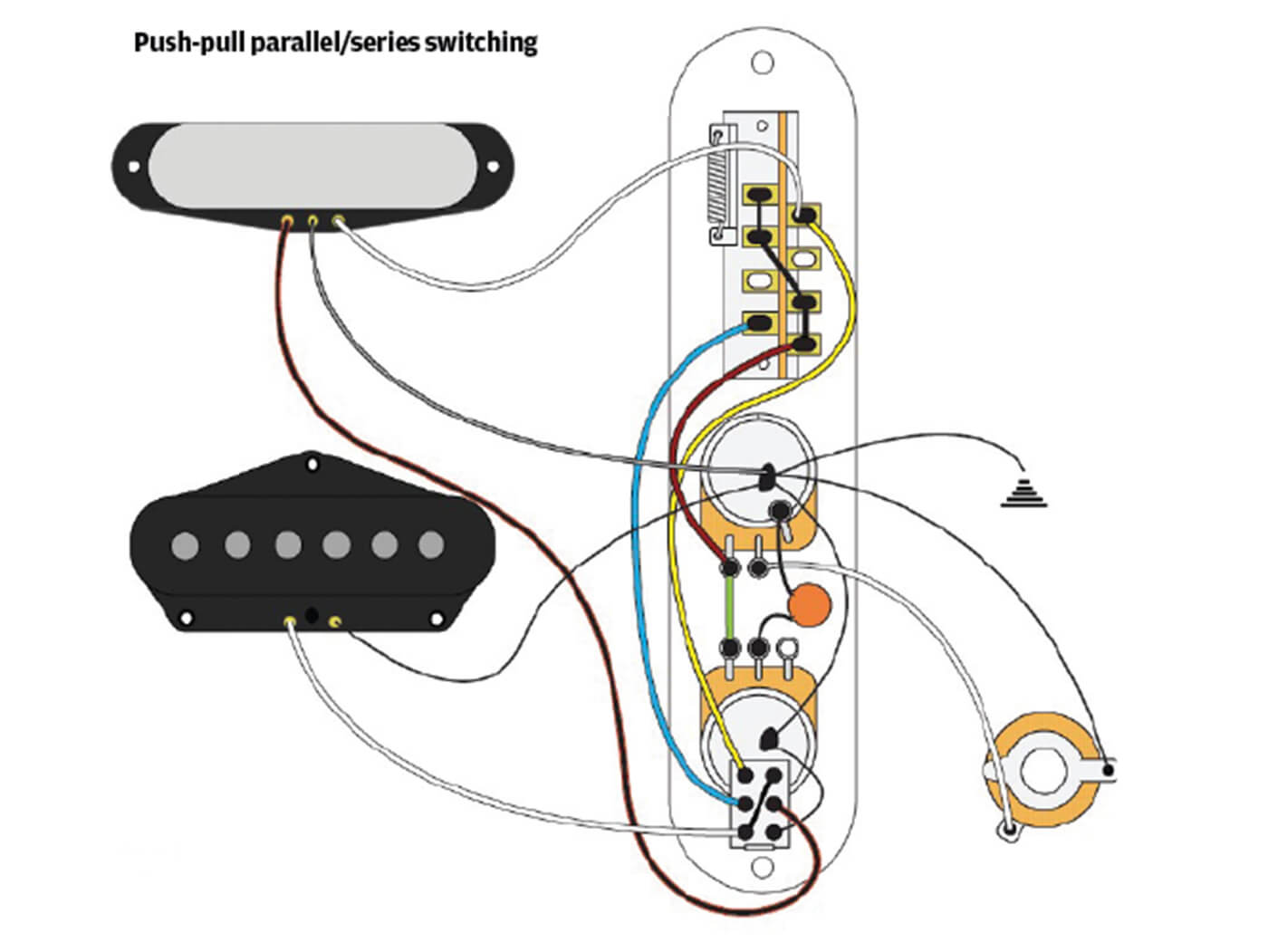
This modification allows you to get a fourth pickup combination from your Tele without swapping the three-way switch or changing the outward appearance. Putting hum-cancelling properties aside for a moment, humbucking pickups are essentially two single-coil pickups wired in series. Regular Teles have two single-coil pickups, so why not add a series switch?
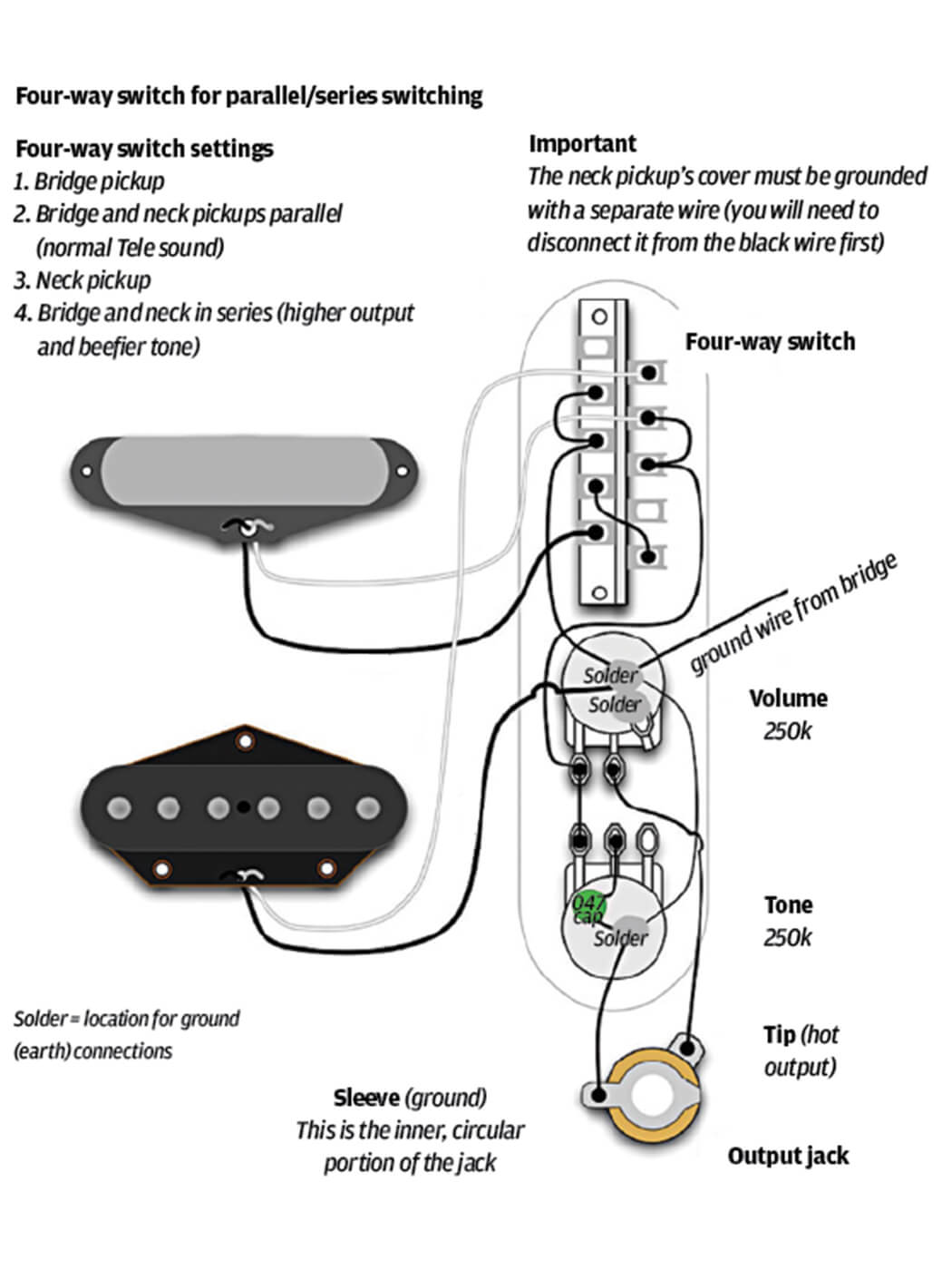
If you use a push-pull or push-push switching pot, it can be mounted in place of the stock volume or tone control, but most modders prefer to replace the tone pot because it’s less susceptible to accidental activation. The new switch selects series mode regardless of the position of the pickup switch, and when you deactivate series mode, the guitar returns to normal. It’s a simple mod that increases output and thickens up the sound for those rockier moments.
13. Bridge pickup upgrades
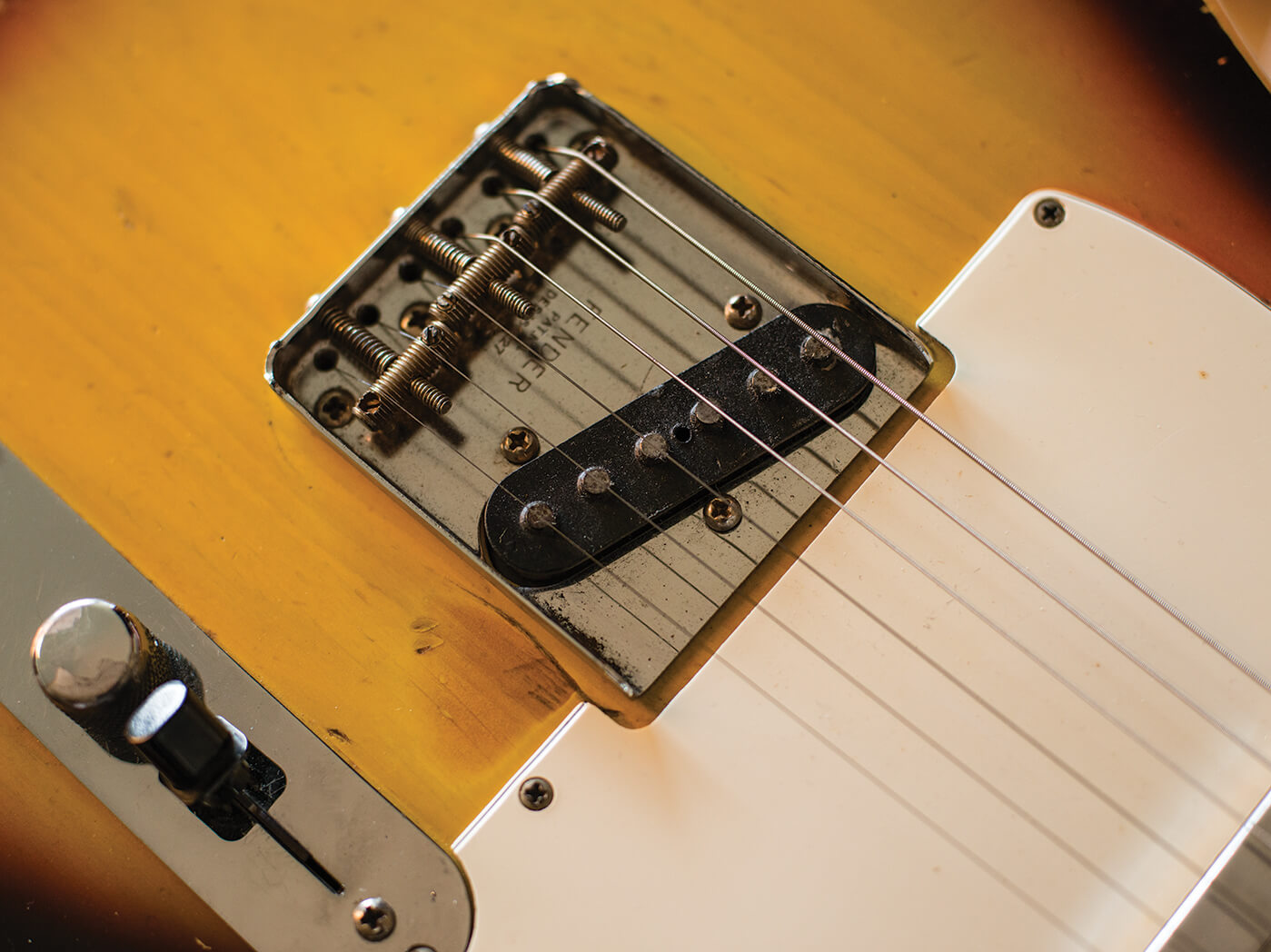
It can’t be denied that some players like the idea of a Telecaster more than the actuality. That’s not a problem, because a bewildering array of replacement pickup options allow you to combine the Tele’s utilitarian looks and functionality with any tone you want.
While retaining the stock bridge, you could try a Seymour Duncan Little ’59 for a PAF-like humbucker tone. Or what about a P-90 soundalike from The Creamery, Harmonic Design or Lindy Fralin? Vintage Vibe and Lollar make Charlie Christian-inspired bridge pickups and TV Jones has just introduced a DeArmond-inspired Tele set. If you want to take it even further, replacement bridges are available with full-sized PAF and Filter’Tron cut-outs.
14. Neck pickup upgrades
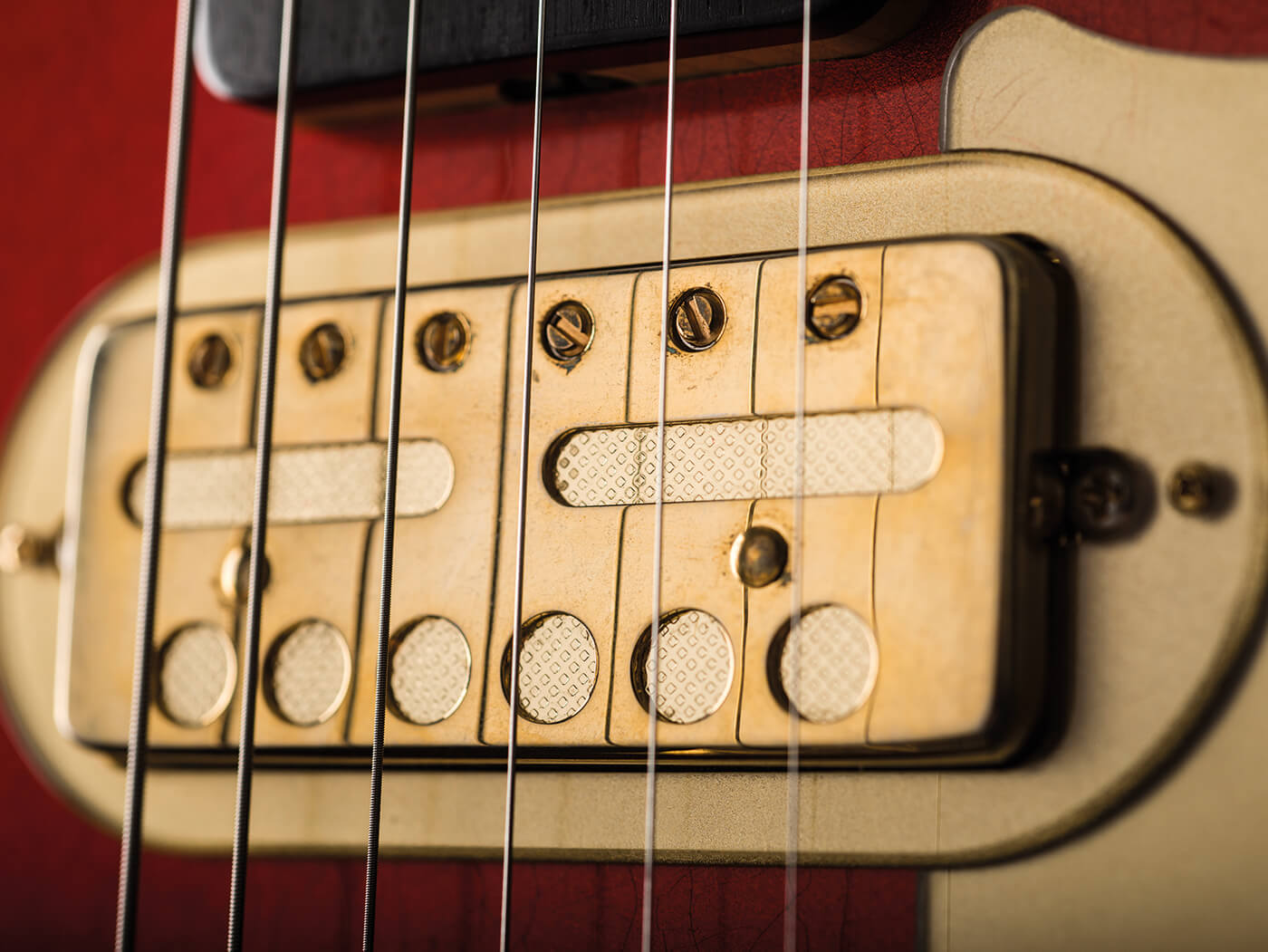
Even Telecaster die-hards will sometimes admit that the stock neck pickup is not the model’s crowning glory. By the mid-50s, players had already begun swapping them out, and some of the most iconic and historically important Telecasters of all time, such as Keith Richards’ Micawber and Albert Collins’ Custom, had humbuckers in the neck.
Given the size constraints of the vintage-style pickup rout, drop-in replacements are relatively hard to find. Even so, you could consider the TV Jones T-Style for some DeArmond flavour, the McNelly T-Bar for P-90 tones or the Vintage Vibe VT-N-BL for Charlie Christian jazziness. For rock and metal sounds, look no further than the Seymour Duncan Hot Rails.
Many modern Teles have oversized routs so you can install any pickup you like without having to cut wood; in which case, it’s game on. If you can imagine it, you can bet someone else has tried it. All the usual suspects are proven performers, but adventurous types might be interested in more authentic Charlie Christians from the likes of Lollar, Firebird-style mini humbuckers or a Gold Foil repro from Mojo Pickups.
15. Potentiometer and capacitor tone tweaks
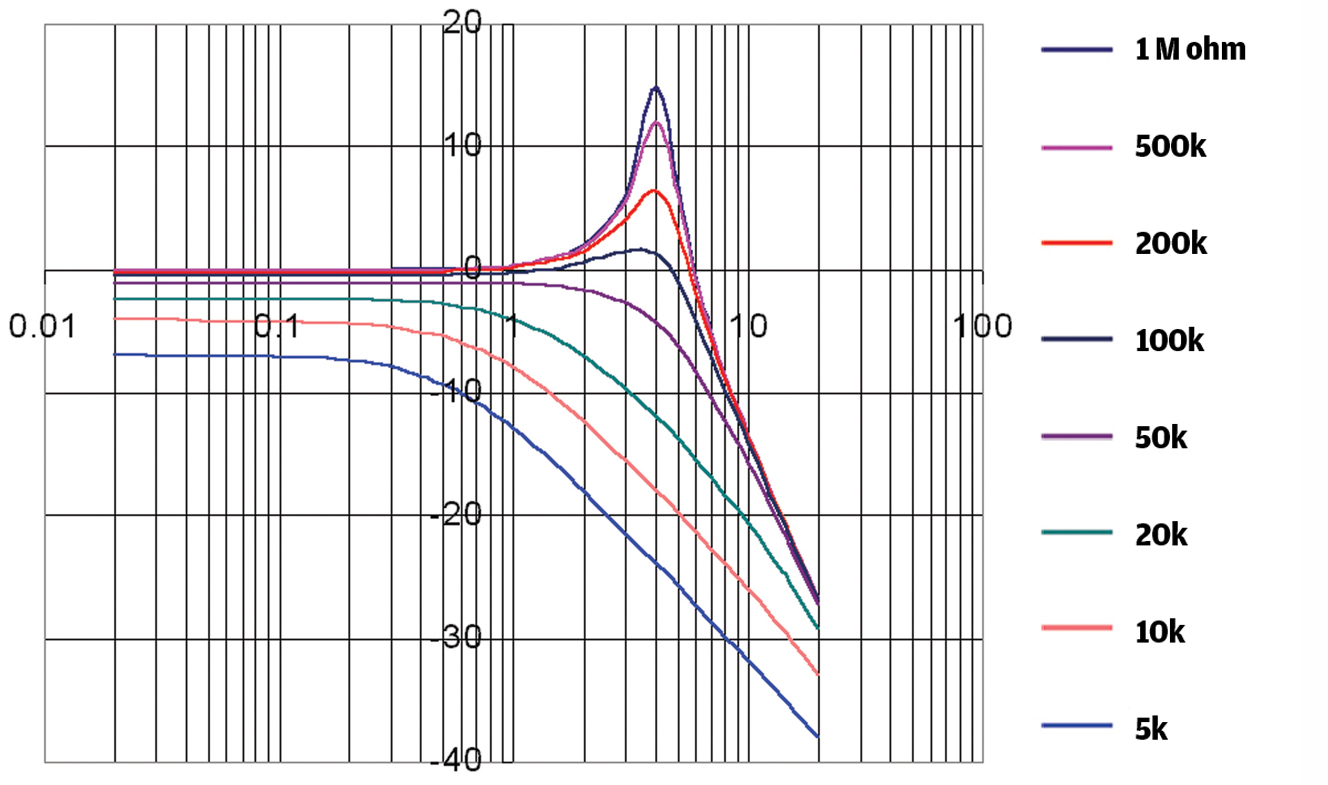
If you’re looking for subtle tone tweaks rather than sonic transformation, experimenting with control pot values is more cost-effective than swapping pickups. Although Fender used 1m pots for a while, 250k is the standard value for Telecaster potentiometers.
It’s commonly held that higher-value volume pots make a guitar sound brighter, which is sort of correct. Conventional guitar circuits have inherent treble roll-off; and pickup inductance, pot resistance and cable capacitance combine to create a resonance peak at the cut-off frequency. Higher-resistance pots accentuate that resonance peak, which happens to be in the treble region with Telecasters. With hot humbuckers, you’ll get more of an upper-midrange boost.
The earliest Stratocasters had 100k pots, and they sound very smooth but less shimmery. Few will want to brighten up a vintage-spec Tele, but a 500k or 1m volume pot may drag a tad more twang out of a hot-wound Tele set.
You may want to mess with your tone control, too. Tele types often feel compelled to imitate truck horns and train whistles. Wah effects are popular, too. In addition to pot values, you can experiment with a linear taper to alter the control response or try different capacitor values.
The stock cap is 0.047uF, but 0.022uF will make your Tele sound brighter and 0.068uF and 0.1uF will make it sound darker. The capacitor value will also alter the range of the tone control, so consider hooking up a bunch of capacitors to a rotary switch to decide which value works best for you.
16. Bigsby conversion

For many, the Telecaster’s structural solidity is a big part of its allure, but there’s no denying the model looks fabulous fitted with a Bigsby. There are plenty of options to choose from and much depends on whether you are prepared to drill extra holes in your guitar. If you’re not, the only option is the Vibramate system, which comes with a specially adapted bridge and a Bigsby mounting plate that is anchored by the strap button screw.
The Bigsby B5 kit also comes with a new bridge plate and a rocking bridge with six adjustable saddles. The Bigsby itself has a front roller bar and it’s screwed onto the top of the guitar. You also need to drill wide holes for the new bridge posts. For a full-on vintage vibe, check out the Bigsby B16 kit. Originally introduced in 1953, this massive casting replaces the original bridge and raises the bridge pickup height. Two holes have to be drilled behind the bridge pickup, with two more above the strap button, but there’s no need to drill for bridge posts.
The kit comes with a 3/16-inch neck shim that creates a back angle. This increases the break angle over the bridge so there’s no need for a front roller bar. Users report that the B16 has a wider range than the other Bigsby solutions, but the guitar will feel slightly different to play.
Check out our DIY Workshop in which we upgrade a Telecaster with a Bigsby here.
17. 1950s tone pot wiring
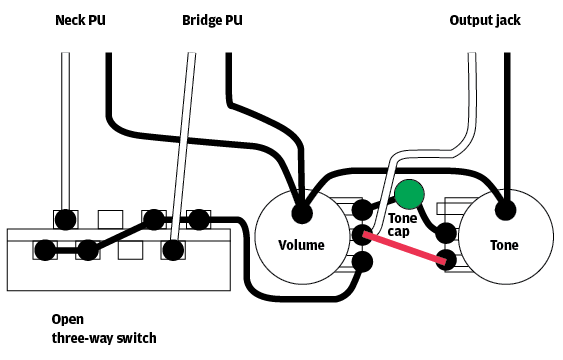
One of the lesser-known quirks of 1950s Gibson guitars was the way the controls were wired up. The tone circuit was connected to the output of the volume control rather than the input, which maintains clarity when you turn down the volume control.
Teles are naturally bright guitars, so a treble bleed capacitor over the volume control can thin out the tone excessively when you turn down. Instead, try Gibson-style wiring and move the wire connecting the tone control to the volume control from the outside solder tag of the volume pot to the centre tag. That’s really all there is to it. If you don’t like the results, this mod is easily reversed.
18. Direct output mod
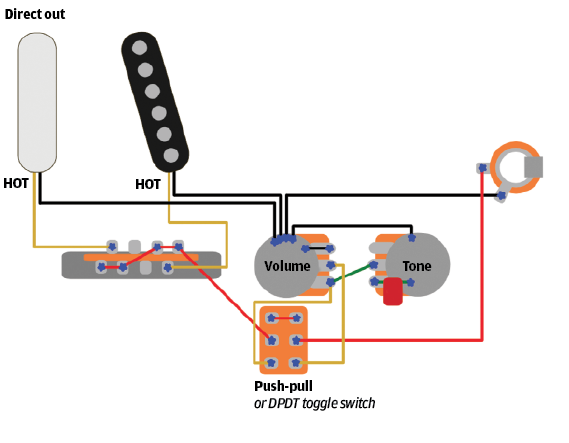
Fender chose 250k pots because they roll off some of the top end. After all, Telecasters are naturally bright guitars and the original ash bodies and chunky maple necks didn’t do anything to tame the treble. Even so, the direct output mod has gained favour with country pickers, who often want brighter and more dynamic tone. Rock players might like it too, especially with darker-sounding over-wound pickups, because you get an even higher output level.
This mod involves adding a switch to bypass the volume and tone controls, and routing the output of the pickups directly to the output jack. You can mount a mini toggle switch on the control plate between the two knobs or use a push/pull switch. Alternatively, you can fit ‘no load’ potentiometers that click into bypass mode. This would allow you to re-engage the controls individually or together. In a sense, it harks back to the original Esquire wiring, where position one disengaged the tone control, or you could equate it to a pedal’s true bypass switch.
19. Nashville mod
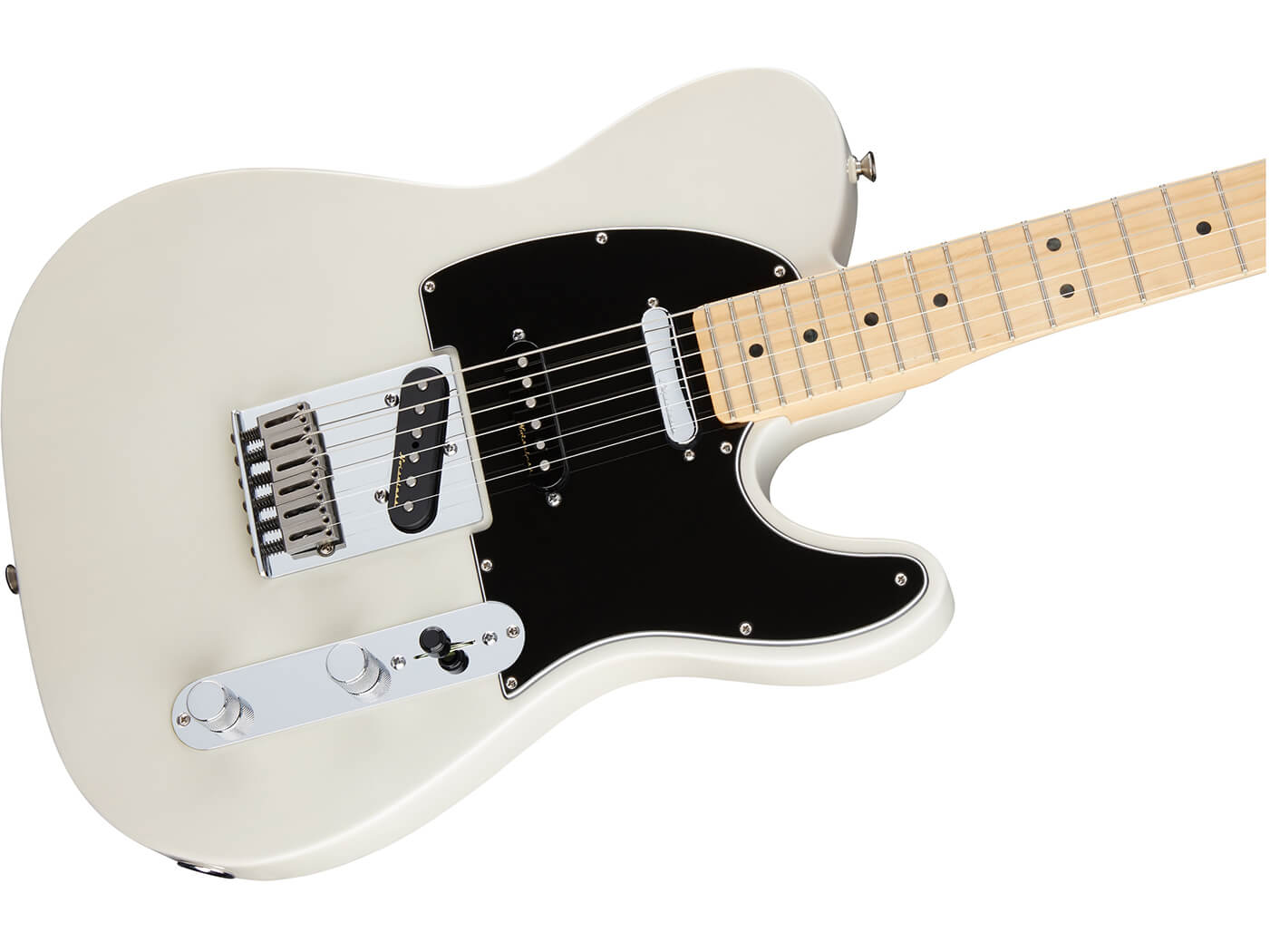
The biggest problem for Fender fans is choosing between Strats and Teles. Understandably, players sometimes want and need the best of both worlds. Although Lowell George installed a Tele bridge pickup in his Strat, it’s more common for players to put a Strat pickup in the middle position of a Tele, along with a five-way switch.
The Fender Deluxe Nashville Telecaster (seen above) is an off-the-shelf Tele/Strat hybrid with an added Strat middle pickup. Some players take things further, with a Strat pickup in the neck position, too. Of course, that will involve even more routing with vintage-spec bodies, but if you’re routing for a middle pickup anyhow, that hardly matters.
20. Electronics upgrades
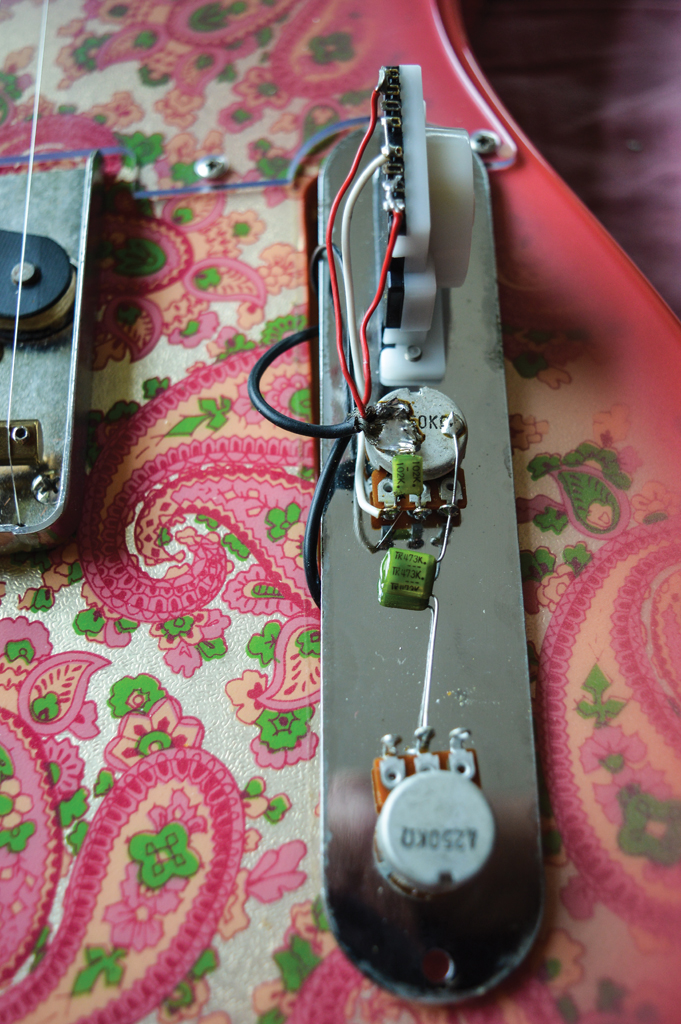
Some perfectly good Telecasters of Far Eastern origin are let down by low-quality electronic components. The necks and bodies may be just fine, the hardware is generally functional and the finish may be really good.
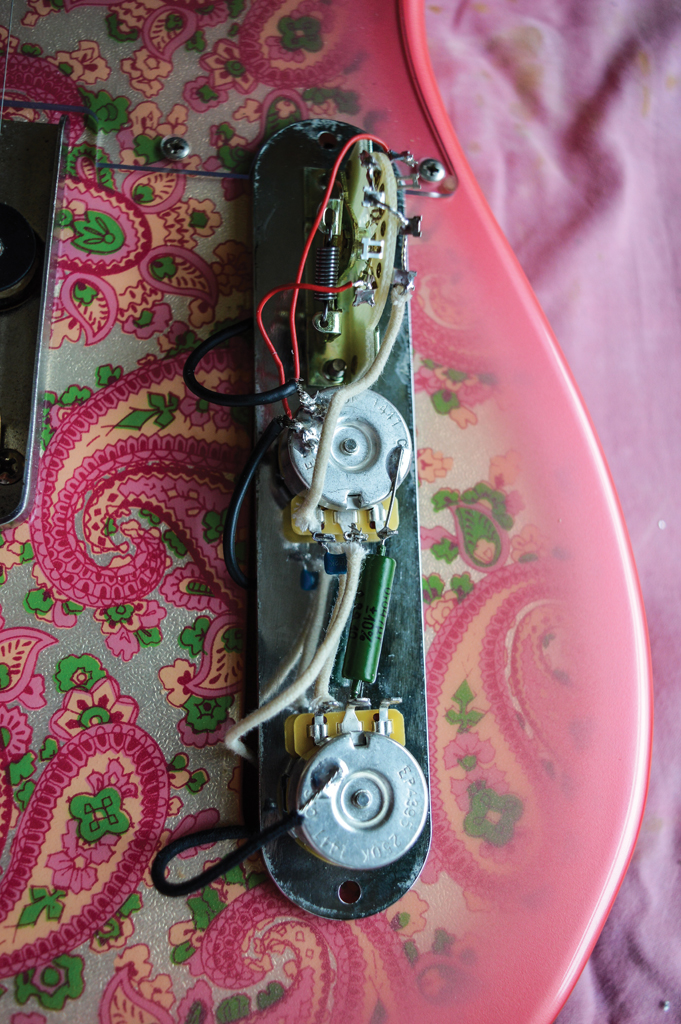
But if you look under the control plate, you might find cheap mini potentiometers and dodgy plastic-cased switches. For relatively low cost, you can upgrade to an Oak Grigsby switch and a pair of CTS control potentiometers. After 30 minutes or so of soldering, your budget Tele will be packing controls that are identical to those used on top-of-the-line Custom Shop models. Simply download a schematic for Telecaster wiring and follow the diagram.
21. Try a string bender
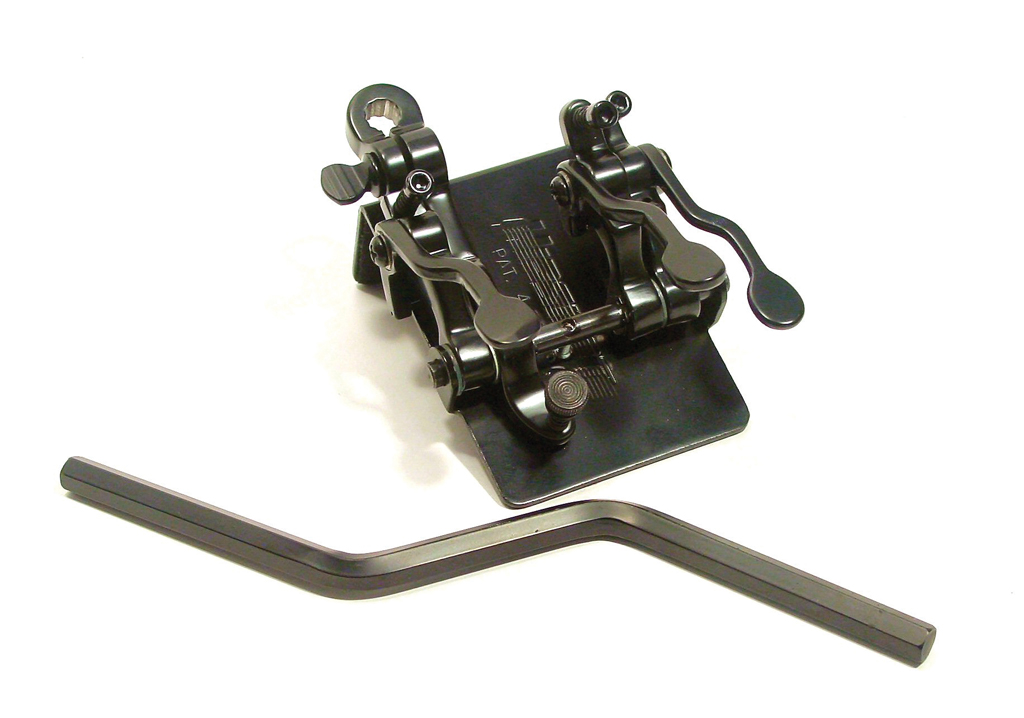
Players were using Telecasters to mimic pedal steel guitars from the get-go, but a certain country virtuoso named Clarence teamed up with his Byrds band-mate Gene Parsons to move the goalposts forever. The Parsons White string bender is a mechanical device that’s installed in a chamber routed into the back of the body.
The lever mechanism is attached to the guitar strap and it’s operated by pulling down on the neck to bend the B string up by a pre-set amount. This allows players to bend the B string up a whole tone while holding chords. Later, Parsons designed the Parsons Green system and the Hipshot B-bender. In addition to bending with the strap button, you can use levers behind the bridge, or even operate a lever using your hip.
Hipshot also manufactures toggle levers to alter the tunings of individual strings, and the Doubleshot which changes the tuning of all six strings simultaneously – so you can go from standard tuning to open G at the flick of a lever.
22. Fit a Toneshaper TS-T2-SS
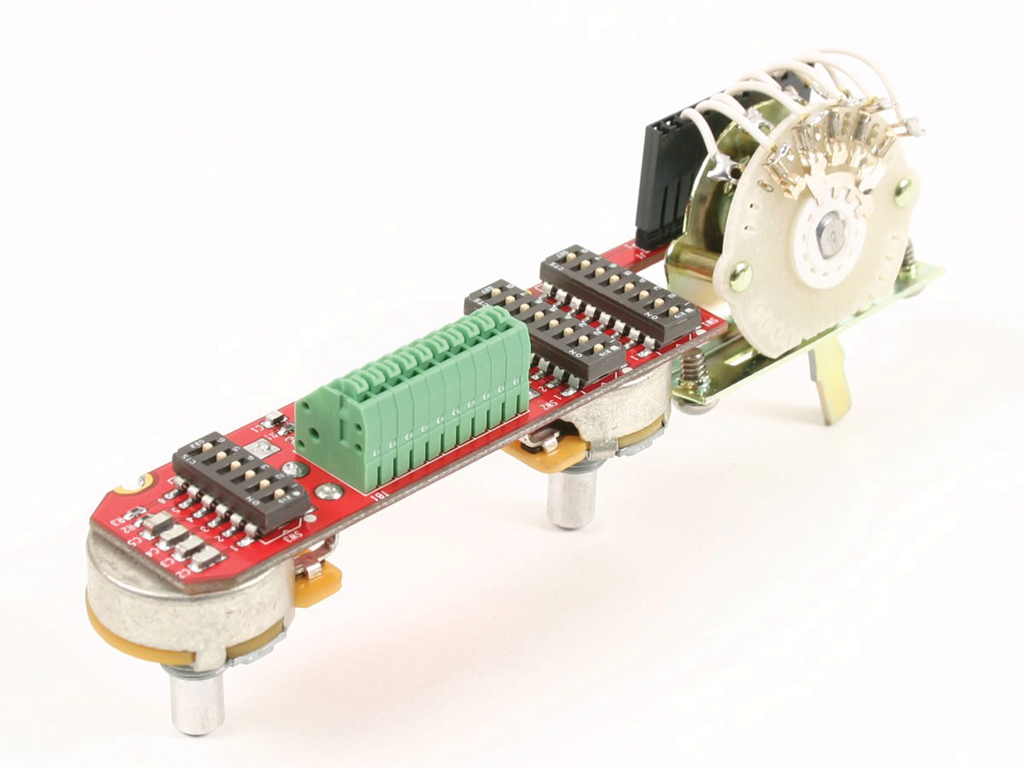
This could be the ultimate in Tele wiring trickery. Most of the wiring mods we have discussed elsewhere in this feature are included in a switchable format on the Toneshaper. CTS control pots and an Oak Grigsby switch are mounted on a PCB that can be bolted onto the back of a regular control plate. All the pickup and output connections are push fit, so no soldering is required and you can simply plug in a three-, four- or five-way switch. They’re all compatible.
Three banks of mini switches allow you to toggle the value of the volume pot from 250K to 500K to brighten the tone. You can also switch a treble bleed resistor/capacitor network in or out. Four surface-mount tone capacitors are attached to the PCB; the switching allows you to use them individually or in combination, enabling you to choose between 15 different values. It’s surely the ultimate birthday gift for any obsessive Tele twanger.
23. Swap your neck to change your tone

When guitarists talk about neck preferences, most think in terms of feel and playability. That’s perfectly understandable, but few stop to consider how neck thickness and mass affect this most ‘acoustic’ of all electric guitars. The common perception is that rosewood fingerboards warmed up the Tele tone compared to the earlier one-piece maple necks. However, it’s worth remembering that Fender was changing the way pickups were being made and swapping over to alder bodies and steel saddles at the same time.
The proof comes when you swap between two identically made necks while retaining the same tuners, body, pickups and strings. Having tried this, we can report that the difference can be profound. As far as one-piece maple necks are concerned, we would associate them with clear definition, enhanced sustain and tonal brightness. A slimmer but otherwise identical neck will produce a woodier, warmer and slightly mellower tone. Ultimately, neck size is just one of many variables that influence sound and sustain characteristics, but it’s worth considering nevertheless.
24. Install a five-way ‘Super Switch’
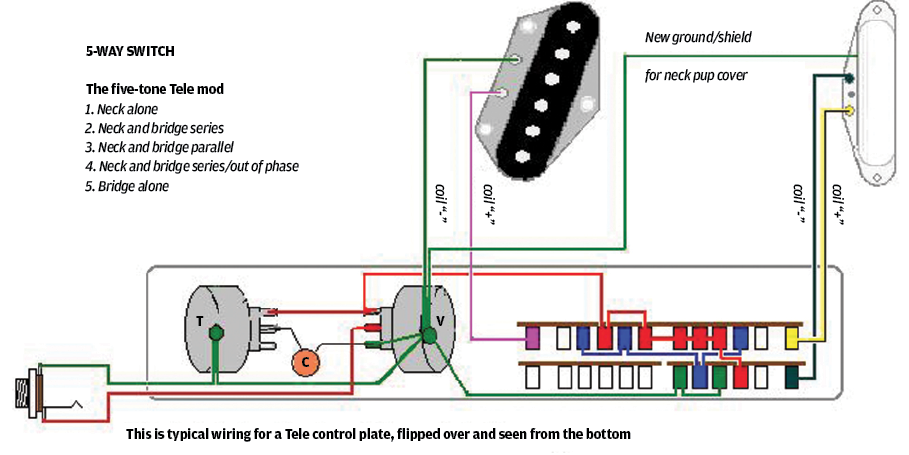
We have already discussed the series switching mod for getting humbucker-style sounds from a regular two-pickup Tele using push/pull switches or a four-way switch. However, you could also consider the five-way ‘Super Switch’ for even more tone options.
The ‘Super Switch’ is unlike a regular five-way Strat switch. This one has two wafers, each loaded with 12 solder tags that are grouped in two batches of six. So that’s 24 solder tags in total. Installed in a Tele, the ‘Super Switch’ gives you the three regular Tele tones and the series combination, plus neck and bridge in series but out of phase. The out-of-phase tone is thinner and scratchier with a hollowed-out Peter Green sort of tone.
25. Leather jackets and engraved accessories
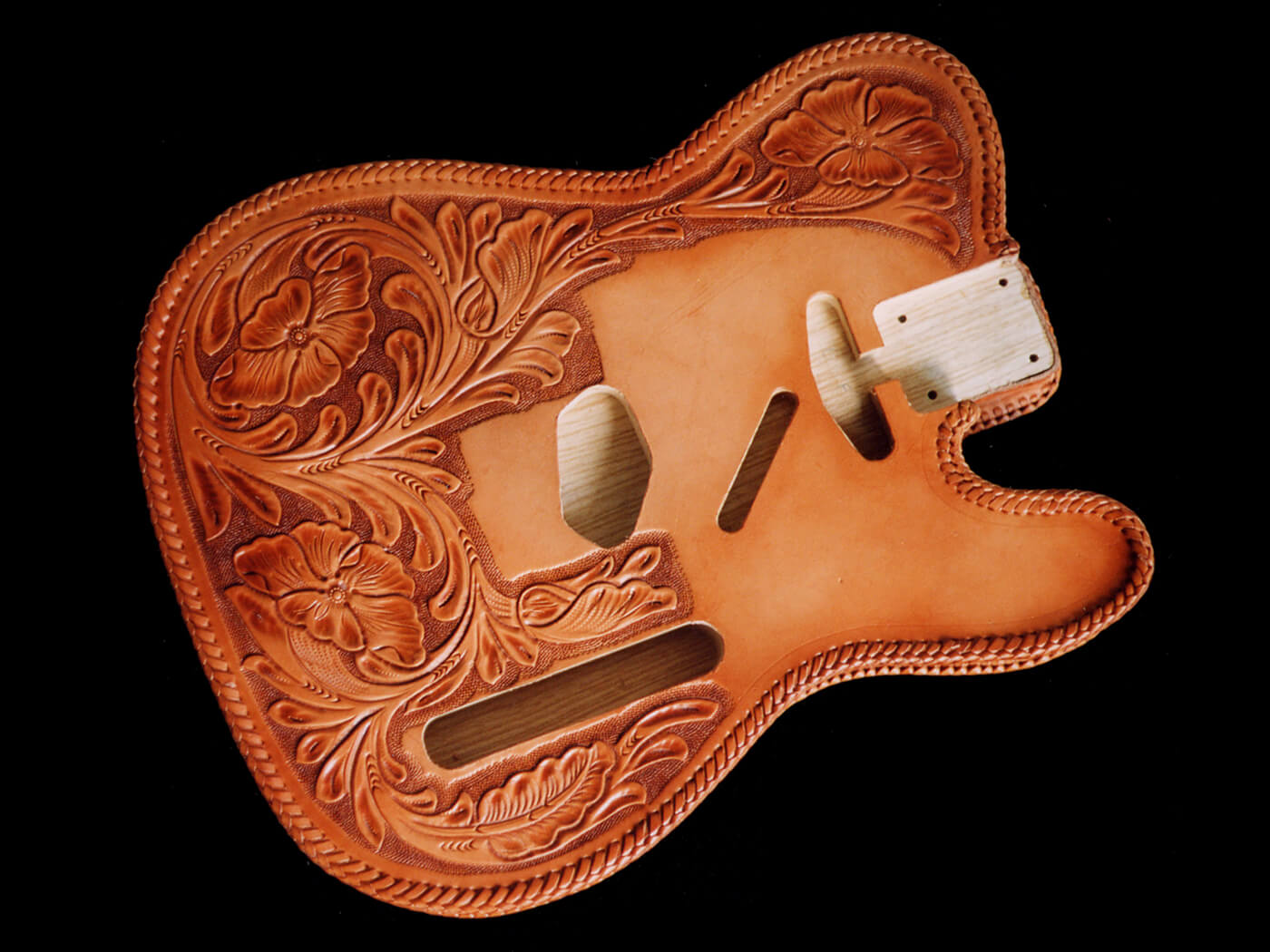
We wouldn’t dream of suggesting country music is kitsch, but nothing in the guitar world says ‘outlaw cred’ like a Telecaster in a hand-tooled leather jacket. Waylon Jennings blazed the trail that many have followed, and you can get one just like Waylon’s from Mosby Guitars or 4E Custom Guitars, or go for something more individual from El Dorado.
If funds won’t stretch that far, what about a tooled leather pickguard or control cover instead? There are plenty to choose from on eBay, and for a swampy blues vibe you could go for faux alligator. If leather isn’t your thing, check out El Dorado’s selection of engraved parts. If it’s metal, they can engrave it, although they sensibly stop short of strap buttons and jack cups.
Check out our guides to upgrade your Gretsch, Les Paul, Stratocaster and acoustic guitars, too.
